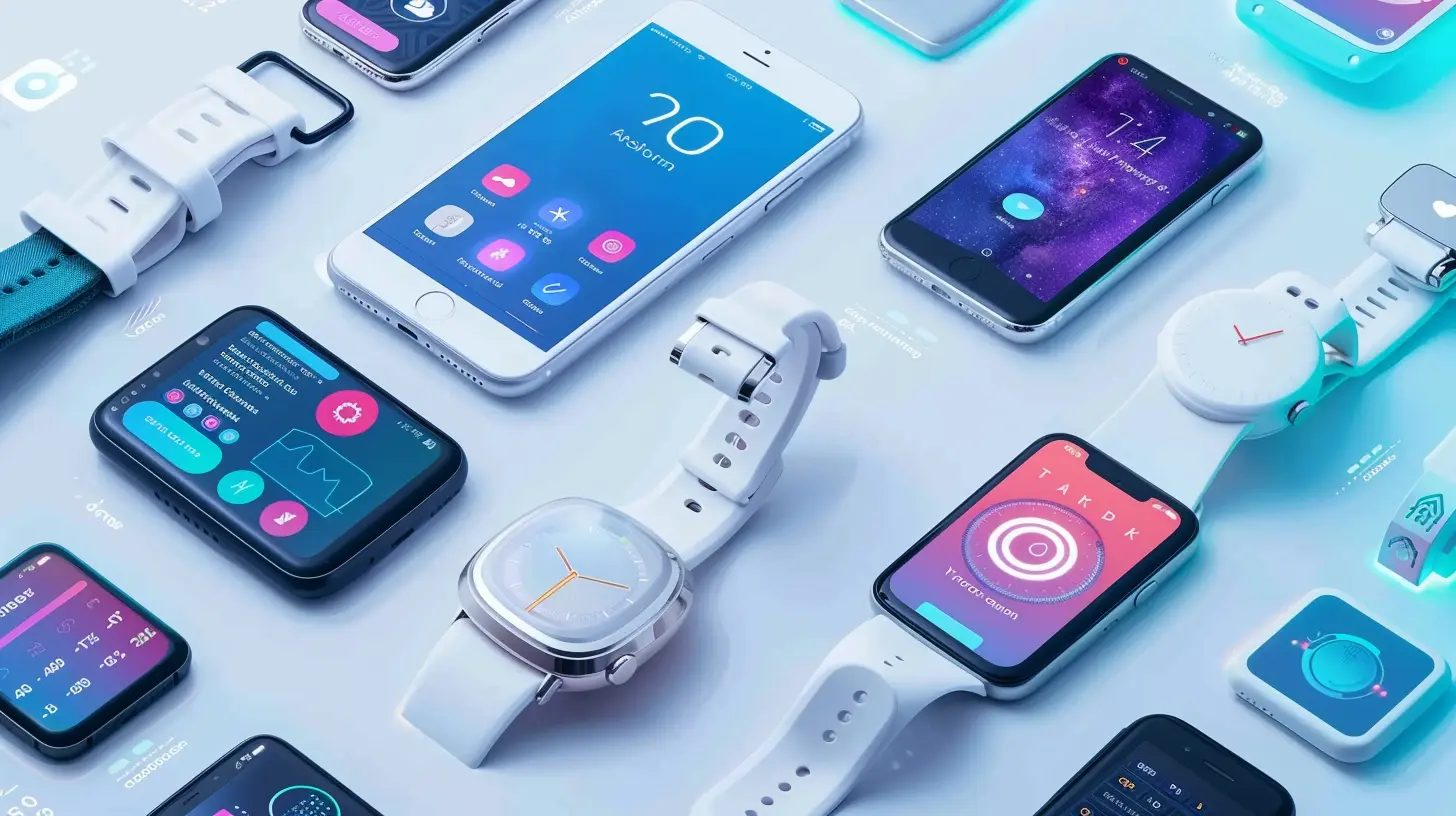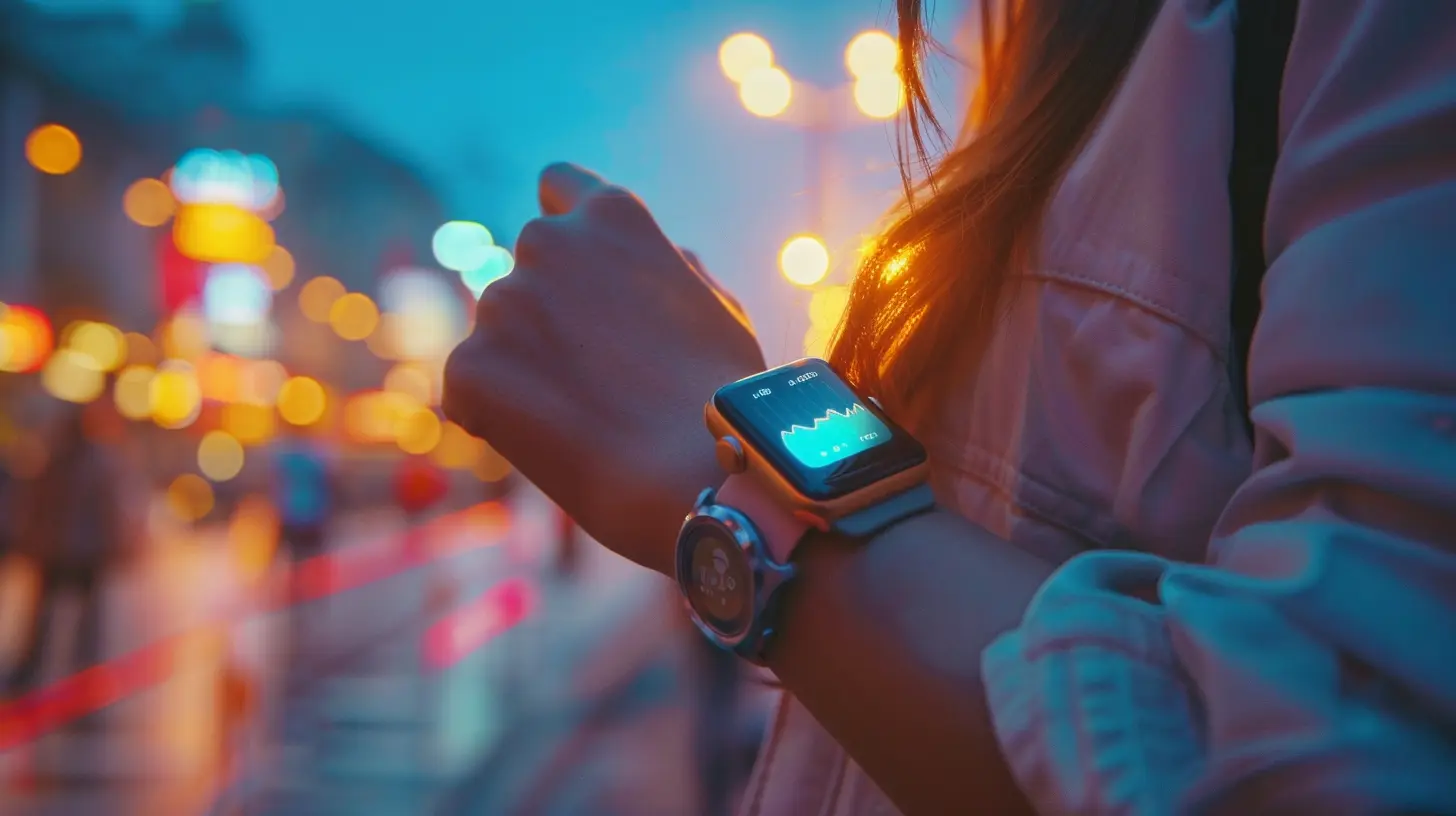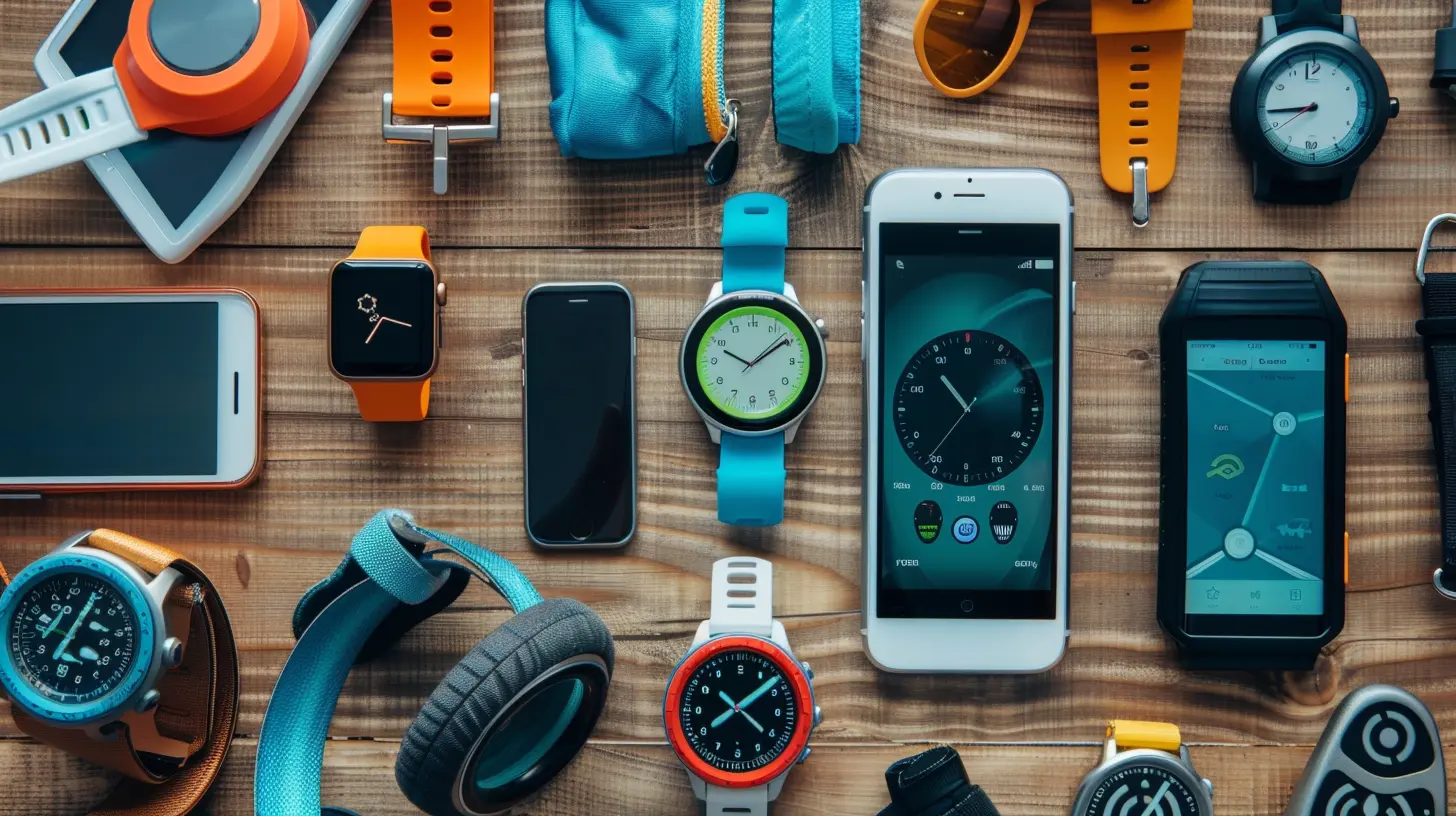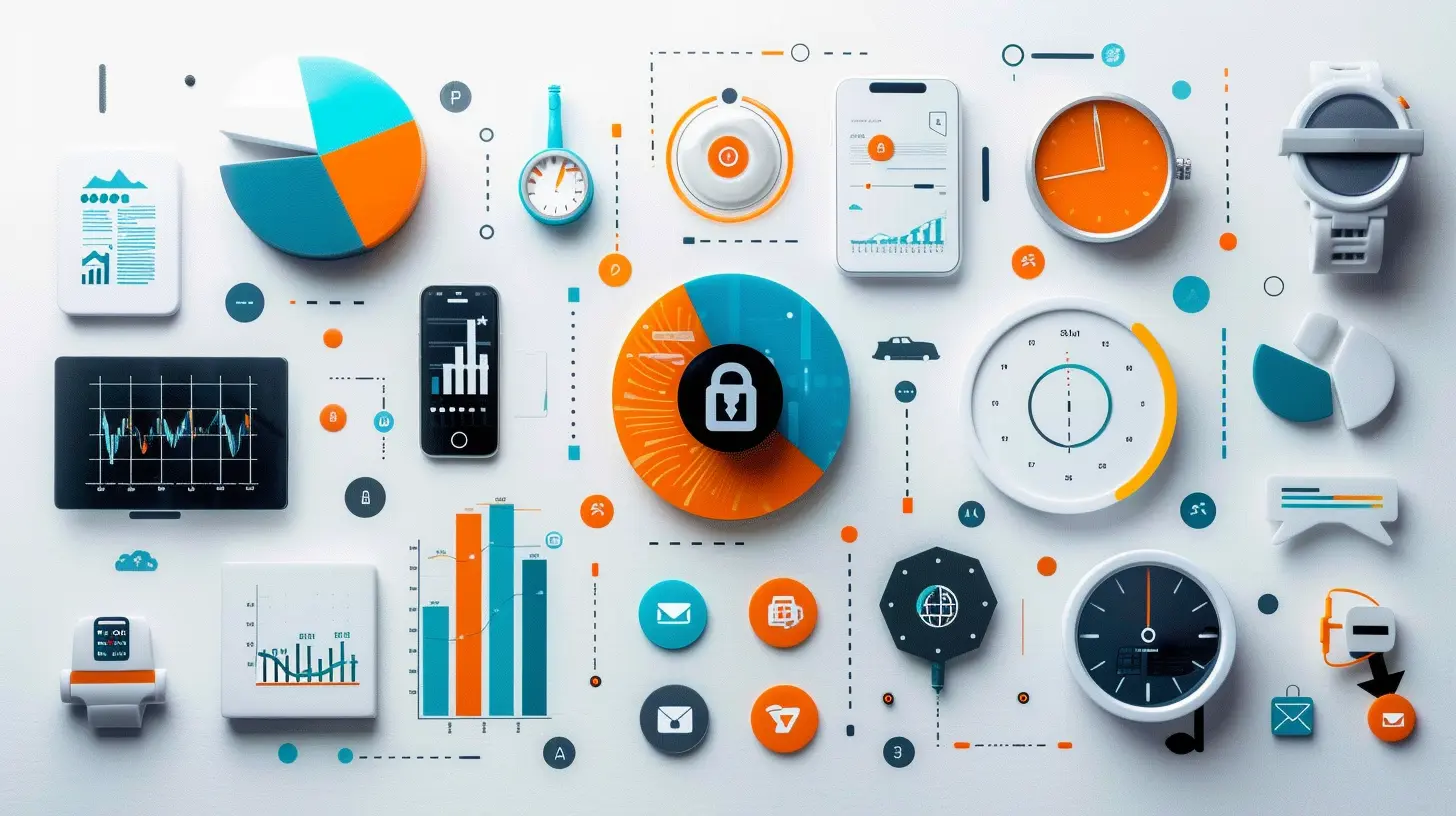How Mobile Apps Are Fueling the Evolution of Smart Fitness Wearables
5 July 2025
Let’s face it—fitness isn’t what it used to be. Gone are the days when you'd strap on a sweatband, jog around the block, and use your fingers to guess your pulse. Today, we’ve got gadgets that can practically whisper sweet nothings to our heart rate sensors. But what’s really making these high-tech fitness wearables smarter than ever? You guessed it: mobile apps.
That tiny icon sitting quietly on your phone's home screen is doing a lot more work than you realize. It’s the bridge between raw data and real progress, and it's completely transforming how we work out, track our health, and stay motivated.
In this article, we’re diving into how mobile apps and smart fitness wearables are working together like peanut butter and jelly—only much healthier.
📱 A Match Made in Tech Heaven: Mobile Apps & Smart Wearables
So, how did we end up with smartwatches that nag us to stand up, sleep trackers that know our bedtime better than we do, and rings that monitor our oxygen levels?It all started with mobile apps.
Fitness wearables were cool from the start, but early versions were like silent gym partners—they collected data but didn’t really talk much. Enter: the mobile app. Suddenly, all that data had a voice, a dashboard, and even a cheering squad. Apps turned those silent numbers into friendly graphs, daily goals, and bite-sized achievements.
Think of the wearable as the tireless data collector, always sensing, tracking, and logging. Its buddy, the mobile app, is the charismatic interpreter, turning data into something you can actually understand—and more importantly, act on.
🔄 From Data Drudgery to Daily Motivation
Let’s say you go for a run. Your smartwatch logs your distance, pace, and heart rate. That’s cool and all, but without the app? It’s just numbers.Open that mobile app, and suddenly:
- You see how today’s run compares to last week’s.
- You get a notification: “Great job! You beat your personal best!” (cue dopamine hit)
- You earn a virtual badge for running 100km total.
Pretty motivating, right? It’s like having a personal trainer living inside your phone.
Apps breathe life into data. They gamify fitness with badges and challenges, keep you accountable with daily streaks, and integrate with your lifestyle by syncing your sleep, diet, and exercise habits into one cohesive story.
❤️ Health Insights That Actually Make Sense
Let’s be real, most of us aren’t doctors. If your wearable throws numbers like "VO2 max" or "HRV" at you, you might blink and go, “uh… health sounds good?”Mobile apps decode the jargon. They provide personalized insights that you can actually use:
- “Your resting heart rate is lower this week—nice work keeping up with your cardio!”
- “You've been sleeping less than 6 hours for 3 nights, which could impact your recovery.”
- “Your stress levels spiked around 3 PM. Maybe take a breather?”
It’s like having a health-savvy buddy who keeps an eye on you 24/7—but in a non-creepy way.
🙌 The Rise of Personalized Fitness Journeys
Here’s the kicker: No two people are the same. Why should our fitness plans be?Thanks to mobile apps paired with smart wearables, personalization is no longer a luxury—it’s the standard.
Wearable data feeds into mobile apps, which then adjust:
- Recommended workouts based on your performance
- Recovery periods based on sleep quality or stress levels
- Daily goals that align with your schedule and patterns
It’s a tailor-made fitness experience, minus the hefty price tag of a personal trainer.
🌍 Staying Connected and Competitive (In a Fun Way)
Who doesn’t love a little friendly competition?Mobile apps add a social layer to fitness wearables. They let you:
- Join global challenges (“Walk 100,000 steps in a week!”)
- Compete with friends on daily goals
- Share workouts or badges on social media
Suddenly, your solo jog feels like a group race. You’re not just trying to beat your own records—you’re climbing a virtual leaderboard with thousands of others.
It’s fitness, but with a side of fun and a sprinkle of bragging rights.
🧠 Beyond the Body: Mental Wellness Integration
Here’s a twist you didn’t see coming: It’s not all about push-ups and heartbeats.Modern mobile apps are expanding their horizons and embracing mental wellness. They analyze your movement patterns, screen time, sleep quality, and more to detect signs of burnout or anxiety.
Some popular fitness apps now offer:
- Meditation and breathing exercises
- Guided journaling
- Mindfulness tracking
- Stress management programs
It’s like your wearable is saying, “Hey, don’t forget to take care of your mind too.”
🔄 Real-Time Feedback = Real-Time Results
One of the coolest perks of mobile apps fueling smart fitness wearables? Real-time feedback. You’re literally getting coached while you move.Picture this: You’re doing a HIIT workout. Your wearable detects your heart rate is too high, and your app nudges you, “Slow it down, champ.” Or maybe you’re on a bike ride, and it pushes you to pedal harder for 30 more seconds to hit your target zone.
You’re getting real-time tips, tweaks, and encouragement—all without paying for a live coach.
🔌 Seamless Integration with Other Health Tech
Let’s not forget the ecosystem. Mobile apps are the connective tissue that holds your health tech life together.They can:
- Sync with smart scales for weight and BMI tracking
- Pull food diaries from nutrition apps
- Combine data from your smart bed, connected water bottle, and even meditation cushion (yep, that’s a thing!)
It’s a centralized place for your entire wellness game plan. Like a mission control for your body.
💡 AI & Machine Learning: The Brain Behind the Beauty
You might not see it, but behind every recommendation, every insight, and every tweak in your app… there’s a tiny bit of artificial intelligence working its magic.These apps are now leveraging AI and machine learning to:
- Predict when you're likely to skip a workout
- Suggest optimal workout times based on your daily habits
- Offer smart nutrition plans based on your activity and recovery levels
It’s not just smart—it’s getting smarter with you.
📊 The Future: What’s Next for Apps and Wearables?
If you’re wondering if we’ve peaked… not even close.Here are some jaw-dropping trends on the horizon:
- Emotion tracking: Apps reading your mood through facial expressions or voice tone.
- Smarter hydration tracking: Sensors that actually detect your hydration levels—not just guess based on steps.
- Wearables embedded in clothing: Imagine your hoodie tracking your heart rate without a watch in sight.
- AI personal trainers: Virtual coaches that evolve with your performance.
And guess who's at the heart of all this innovation? Yup, those mobile apps.
💬 Final Thoughts: It’s More Than Just a Step Counter
So, what have we learned? Mobile apps aren’t just the sidekick—they're the secret sauce.They turn your wearable from a data-logging device into a personal trainer, wellness coach, sleep expert, and cheerleader—all rolled into one. They make fitness feel fun, personalized, and even—dare I say—addictive in a good way.
So next time you open your fitness app and see that little “You hit your goal!” confetti animation, give it a nod of appreciation. Behind that virtual celebration is a finely-tuned, tech-powered system designed to help you become the best version of you.
And hey... isn’t that worth a few extra steps?
all images in this post were generated using AI tools
Category:
Mobile AppsAuthor:

Ugo Coleman
Discussion
rate this article
2 comments
Deborah Kirkland
Great insights! Mobile apps truly enhance the functionality of smart fitness wearables for users.
October 18, 2025 at 11:09 AM

Ugo Coleman
Thank you! I'm glad you found the insights valuable. Mobile apps really do play a crucial role in maximizing the potential of fitness wearables!
Pierce McIntosh
Great insights! Excited to see how mobile apps continue to enhance smart fitness wearables for everyone.
July 12, 2025 at 12:15 PM

Ugo Coleman
Thank you! I'm glad you enjoyed the article. The future of smart fitness wearables truly looks promising with mobile app integration!


